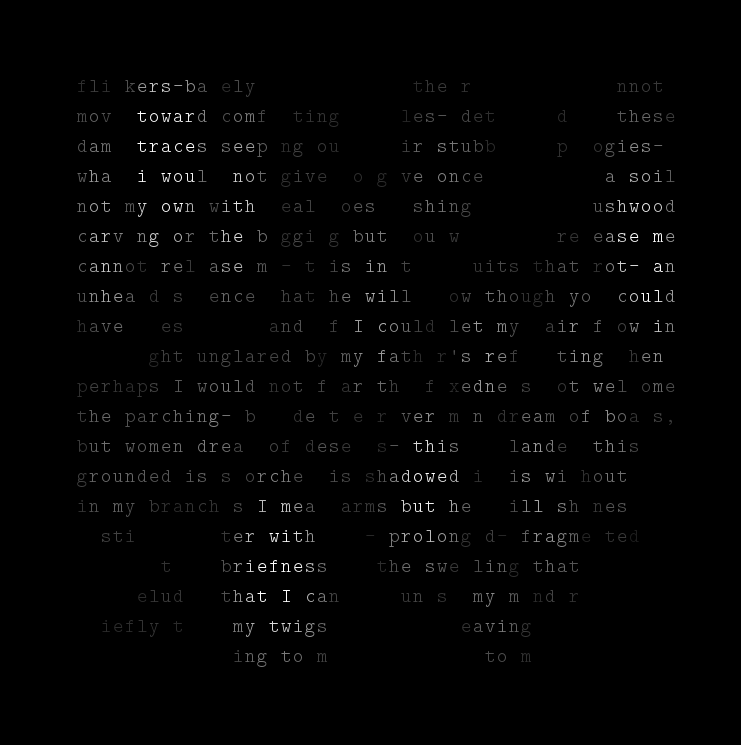Riverdottir

Summary
Medium: Custom Java software using the Processing library, written for live video and musical performance
Status: Complete (2012)
Presentation/Publication history: NEASA Digital Revolutions Conference (2012), Brown University Anthology Reading Series (2015)
Description
Riverdottir is a digital performance piece based on the myth of Daphne and Apollo. At its core is a single unchanging text, written in conversation with a section of Anja Utler’s engulf–enkindle on the same theme. In order to access the text, however, the audience depends upon the performer, who reveals the barely-legible words in flickering bursts. By pressing keys on a standard keyboard, the performer temporarily illuminates sections of the text beneath simulated waves, simultaneously playing an audible melody of his or her choosing.
As the performance continues, the audience becomes slowly aware of the sinister language hiding beneath the pacific audio and appealing visual surface of the piece. Gradually, the sexual violence and (in Utler’s brilliant rendering) horrifying transformation of the myth become apparent. This realization depends equally on how the performer chooses to present the piece and what elements of flickering language each audience member latches onto.
In this slow revelation, Riverdottir highlights the complexity of aestheticized violence and misogyny. Viewers may find themselves attracted by its conventionally lovely surface, but whether they recoil from its underlying terror depends on how they (and the performer) direct their attention. In this way, the piece offers nuance in the conversation around aestheticized violence without mitigating its horror in the underlying myth.
To View
The performance version of Riverdottir is available as a runnable jar which you can download here. To run it, you should first make sure you have Java installed on your system. You should then be able to double-click on the downloaded jar file to execute it on most Windows and Mac systems as well as many Linux desktop environments. Once the piece is running, tap (do not hold down) a few keys on the keyboard to get a sense of how the piece can be performed.
You can also view video documentation1 of a performance of Riverdottir below:
Footnotes
-
Due to some sort of conversion issue on upload to YouTube, the video/audio quality is not ideal for this documentation, so I encourage you to check out the “live” runnable jar version if possible. ↩